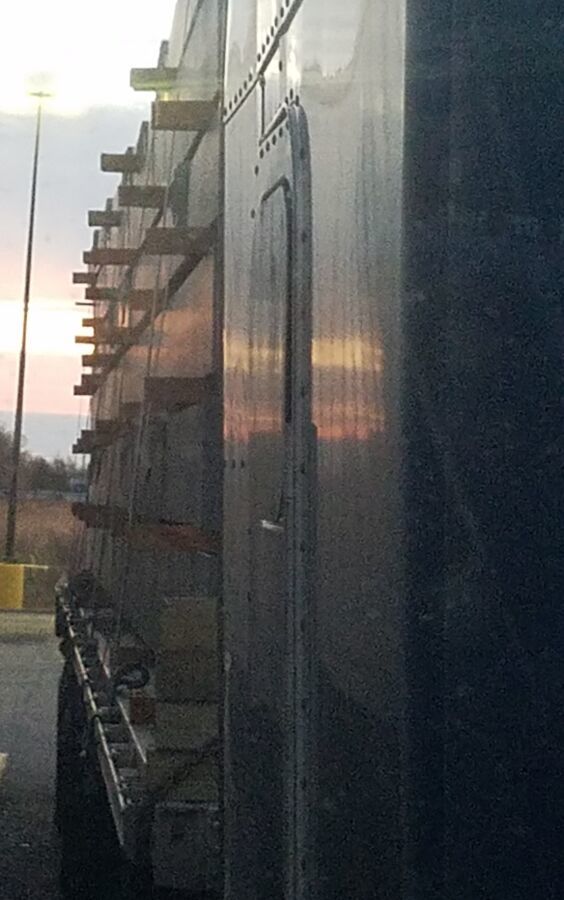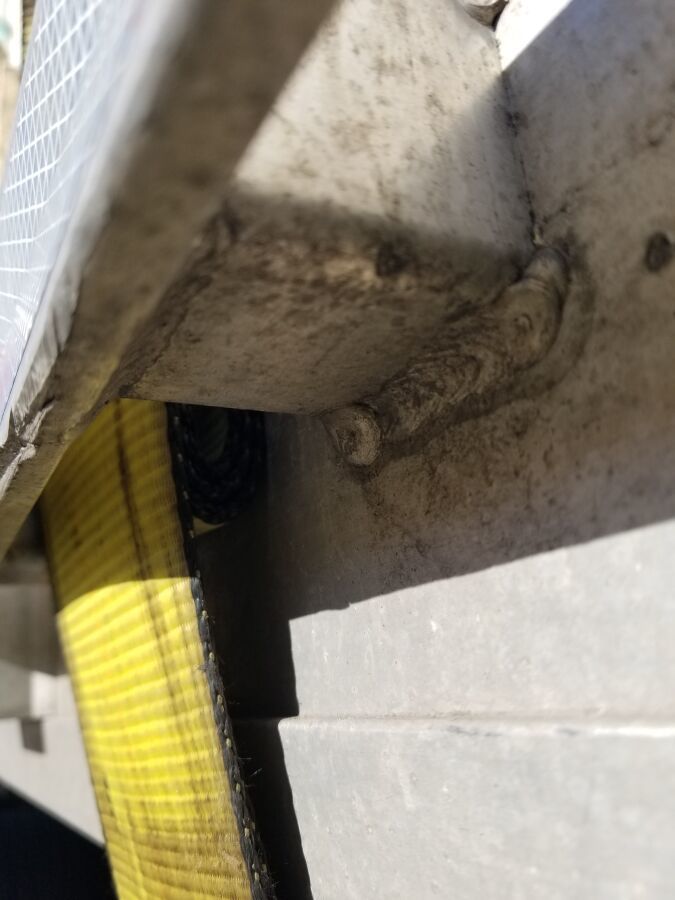Flatbed Securement Discussion 2022
Topic 31351 | Page 3
Thank you! That helps a lot. This is what I'm hauling to Dug Gap, Georgia. Im nervous about Eagles Pass.

Pre loaded trailer? If so go buy a piece of 1” pvc about 7 feet long. Cut a notch in one end so you can push straps between that third and 4th tier. It’ll give you much better securement.
I ran into a issue with the winch and strap 2days ago. When I was cranking the straps they stopped getting tight even though the winch was still turning. Hope I'm clear on what I'm trying to say. The winch would turn but the straps didn't tighten. Happened on the last 2 winches.
I always roll the entire strap in the winch when I secure a load but had to adjust and do it differently to get the straps tight enough to hold the aluminum ignots.
 I did my best Chief Brody impersonation that I could lol. This worked and got the straps tight enough to secure the load properly.
I did my best Chief Brody impersonation that I could lol. This worked and got the straps tight enough to secure the load properly.
My question, is it better to thread the strap all the way through the winch, crank until tight and fold the excess strap like in the pic? Is that a better securement technique than rolling the entire strap in the winch?
Chief, I see in your pics you do this a lot but I assumed it was because the strap didn't fit in your stake pocket winches but now I come to realize it's your technique. I happened to feed the strap the wrong way because the fold is on the outside of the strap and not on the inside where I could secure it between the strap and trailer.
I will try this way again on my next load, it seemed to be easier than rolling the entire strap in the winch. Just looking for you guys opinion on the different ways to roll the strap in the winch.... And what would make the winch turn without it tightening the strap?
And also feel free to critique the way I had the fold in the pic.... Thanks.
What are those camo straps rated for?
HOS:
Hours Of Service
HOS refers to the logbook hours of service regulations.
What are those camo straps rated for?
To be honest I have no clue. I'm guessing 5,400 like the rest of my straps? Just curious why did you ask that question about the camo strap? Does it look like it's not a DOT standard strap? Thank you for bringing it to my attention, just wondering what you see that I'm missing...
DOT:
Department Of Transportation
A department of the federal executive branch responsible for the national highways and for railroad and airline safety. It also manages Amtrak, the national railroad system, and the Coast Guard.
State and Federal DOT Officers are responsible for commercial vehicle enforcement. "The truck police" you could call them.
HOS:
Hours Of Service
HOS refers to the logbook hours of service regulations.My question, is it better to thread the strap all the way through the winch, crank until tight and fold the excess strap like in the pic? Is that a better securement technique than rolling the entire strap in the winch?
I thread my strap down through the rub rail up through the winch from the outside in. This allows you to wedge the excess strap in between the securing part of the strap and the rub rail. Doing it this way you don't really need to bungee the excess.


You did yours from inside out so your excess was on the outside. Next time do it from outside in that way your excess will be inside the strap instead of outside the strap.
The example of the bungie that I showed you was on the stake pocket winch which doesn't allow you to bind the excess in between the rub rail and the strap.
Also now you've experienced what I was talking about when you roll up the entire strapped in the winch. You get to the point where all you're doing is tightening the coil that goes around the winch rather than further tightening the strap.
Rolling the entire strap in the winch will never allow you to get it tight enough, as you're experiencing. The only exception is when you have a super tall load that takes up most of your strap.
After threading your strap all the way through the winch, pull about 2-3 feet of slack back through the winch, then hand turn the winch until that slack is rolled up into the winch. That should give you about three hand turns before it's time to break the winch bar out, essentially having only about three wraps of strap in the winch, instead of the whole thing.
As Chief described, threading the strap from the outside inward will leave your excess strap in the proper position to fold and secure it away under the tightened strap.
As for the camo strap, you need to be absolutely sure of the WLL rating of any component of your tie down. How else will you know how many straps to use?
What are those camo straps rated for?
To be honest I have no clue. I'm guessing 5,400 like the rest of my straps? Just curious why did you ask that question about the camo strap? Does it look like it's not a DOT standard strap? Thank you for bringing it to my attention, just wondering what you see that I'm missing...
Not flatbed, but I've seen a couple straps. I've never seen any in the truck stops for sale, and I can't recall ever seeing one used for securing normal cargo by a driver.
You don't know that strap's working load limit rating? SMH
If you don't know you're gear and what it can/cannot perform INTIMATELY, you are setting yourself up for failure.
DOT:
Department Of Transportation
A department of the federal executive branch responsible for the national highways and for railroad and airline safety. It also manages Amtrak, the national railroad system, and the Coast Guard.
State and Federal DOT Officers are responsible for commercial vehicle enforcement. "The truck police" you could call them.
HOS:
Hours Of Service
HOS refers to the logbook hours of service regulations.Thanks Chief, Thanks Turtle. I have watched a few videos on the different ways to fold the strap in the winch yesterday. Looks like that is the better and faster way to load the strap in the winch. I will also throw my straps a different way. I was told to throw the buckle end but after watching videos and the mishap with the wind earlier in the week, it seems more sensible to throw the roll instead of the buckle.
PackRat, again thank you for bring the camo strap to my attention. That is something I should've been aware of but it's easy to overlook the simple things right now. Being 3 weeks solo and having to self train, my mind is all over the place. I appreciate your eyes and seeing that something looked off to you. Thank you
New Reply:
New! Check out our help videos for a better understanding of our forum features

















Preview:
This topic has the following tags:
Flatbed Load Securement Photos Trailers Trip Planning Truck Driver Safety Truck Driver Training







 TT On Facebook
TT On Facebook
One chain per stake pocket or spool. Personally, I never liked going around stake pockets of I didn’t have to. Those plates you see mount in tracks on the trailers. They’re normally referred to as J plates or J hooks. Your angles don’t have to be that tight but the closer the better.
HOS:
Hours Of Service
HOS refers to the logbook hours of service regulations.